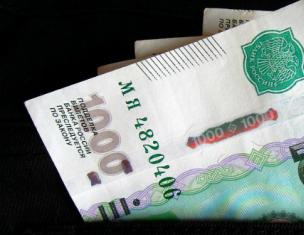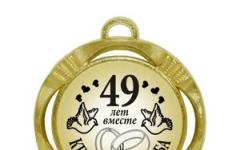
The first washing machine was patented on March 28, 1797. This type of household appliances has become an integral part of human life. But it was not always so. Washing was once hard work. We will tell you about how people tried to make their work easier and about the appearance washing machine.
Ancient Egypt
Even in Ancient Egypt, various chemical substances for cleaning clothes. So, soda, which was specially mined, served as a primitive "powder". Potassium carbonate was also obtained from charcoal. This laundry detergent has existed for centuries. And even before our era, people adapted to make soap from the ash and fat of animals. The clothes were also washed with wax. Even the roots, bark and fruits of the plants were used. For example, it was found that soapwort juice in water turns into foam. This property of the plant determined its purpose in everyday life among ancient people.
Ancient Greece
V Ancient Greece there was a process of washing clothes. It was a whole ritual, similar to making wine. So, people dug small holes in the clay soil, poured water there, then the washerwomen threw a bunch of clothes into them and stomped on the laundry. After this procedure, the linen was rinsed in clean water and dried by the sea. Incidentally, this is no coincidence. The surf rubbed the clothes on the pebbles, which made them even cleaner.

Laundry pond in Etara in the city of Gabrovo
Ancient Rome
It was no accident that ancient Rome was called the center of European civilization. The Romans made great strides in various fields. Their washing methods were also advanced. There is even a legend about how the soap was obtained. According to her, people melted fat on a sacrificial fire, but it, together with wood ash, was washed away by rain into the Tiber River. The people who washed on the shore noticed that the clothes were washed better because of this. The fact that the Romans actually used such soap is evidenced by its remains found on the Sapo Hill. By the way, nobody washed with such soap because of its hardness. But for washing, it was just right.
Read also Alena Akhmadullina for Barbie Capsule Collection
Ancient india
Interestingly, in India only men were involved in washing. And in some parts of the country, this tradition has been preserved to this day. Hindu laundresses bang their laundry against huge boulders throughout the day. This washing method was quite common in different parts of the world.
Medieval Europe
Almost a whole caste has formed in Europe - laundresses. The women worked from morning to evening in the open air in any weather. Laundry facilities were located near fountains or pools. In some regions, where there was a sea or a river nearby, they were located right on the shore. For them, a kind of laundry-boats were moored there. Laundresses have never been out of work. First, the linen was boiled, and then all this heavy wet burden was dragged to the river. There, women kneeled on wooden walkways and rinsed fabrics. It is curious that in the 19th century there was a punishment for prostitutes, they were sent to the laundries to work, as it was considered very difficult.

Camille Pissarro. Laundresses
How did the sailors wash
Women were not taken on board the ship, so the men had to cope on their own. They came up with the following: throwing a bundle of clothes on a rope overboard right on the move. The fast current washed away the dirt from the clothes. Such washing without detergents it was also called "dry".
Ancient Russia
In Russia, linen was originally soaked in huge containers. The women had whitening products, of course, of herbal origin. For example, ash from buckwheat straw or sunflowers, as well as decoctions of potatoes and beans, sour milk. Among the bleaches were urine, pig manure and lemon juice... Then hot stones were thrown into the vats of linen. Elderberry and aloe juice served as soap.
Those housewives who could not hand over their clothes to the washerwomen arranged a wash once a month. But then the process dragged on for a whole day. Wet processing not all items of clothing passed by. Be sure to wash bed dress, underwear and baby clothes. But outerwear- heavy women's dresses, men's camisoles - held over steam and brushed. Alcohol and kerosene served as stain removers.
In Russia, laundresses, as well as in other countries, used rollers for washing. It is a wood plate with a short handle. Interestingly, the rolls retained their shape for nine centuries. It was made from birch, linden, aspen. They used it like this: clothes soaked in soapy water were laid on the boards, and then they hit the laundry with a roller. And so several times.
Leonardo da Vinci's invention
The first model of a washing machine was depicted in his notes by the artist and inventor Leonardo da Vinci. He drew the construction of a mechanical washing machine. However, he never built it. Meanwhile, many centuries passed until the profession of a laundress disappeared.
The emergence of the washing machine
It was only in the 18th century that a device was invented that accelerated and simplified the washing process. This happened in 1797. Nathaniel Briggs received a patent for the invention in the USA. Construction of the first washing machine was a box made of wood with a moving frame, which created the effect of cleaning the fabric.
The rotating drum was invented by James King half a century later. Further achievements belong to Moore, who improved the mechanism in 1856. Laundry with balls of wood were put into a container and filled with water. The frame inside the device made the balls roll over the laundry. Since that time, the boom of washing machines began, but they were all united by one principle - they were manual. True, during the California gold rush, an entrepreneur came up with the idea of replacing human labor with the labor of mules. They twisted the mechanism of the typewriter. And in 1861, a mechanism for wringing out linen was invented.
The author of the first household washing machine was William Blackstone in 1874. He gave one to his wife, and then put the production of cars on stream. By the next year in America there were about two thousand patents for such devices. But only in 1900 their mass production began. The pioneer was Karl Miele. He converted the churn and put the invention into circulation. They began to buy up the car.
Now even a child can handle washing - load the washing machine, press a couple of buttons and hang up almost dry laundry is not difficult. But what did they do when not only hot water, but also soap was not really there?
I propose a short excursion into the past
Some still know what a washboard is (“my grandmother has one in the village”), but few have seen it in action. But it appeared only at the beginning of the 19th century and was used more in cramped urban conditions, devoid of space and the close proximity of a lake, river or stream.
The predecessors of such a ribbed board were objects, the mere appearance of which plunges the uninitiated into a stupor. But - in order.

Than washed
A hundred years ago, housewives did not have to ask the price of detergents - there was no need. For washing, soap solutions were used, which were obtained at home. It was lye and soap root.
Lye, which gave the name to a whole class of chemical compounds, alkalis, was obtained from a solution of ash, which was supplied free of charge by a Russian stove every day. Lye was also called “beech, bucha”, and the washing process itself was called “buchenie”.

How and where was it washed
It was possible to wash with it in the following way - a bag of sifted ash was placed in a tub of linen, poured with water and thrown in hot "rock stones" to make the water boil. But it was possible to get lye in the form of a solution.
To do this, the ash was mixed with water, insisted for several days and a solution was obtained that was soapy to the touch - so concentrated that it had to be additionally diluted with water. Otherwise, clothes could wear out faster when washed with such strong lye.

Another source of detergent, the soap plant (or soap root) was crushed, soaked, filtered, and the resulting solution was washed, trying to use up everything, as it quickly deteriorated.
Never washed in a bath, it was considered a sin. Linen could be thrown in the house or near the bathhouse, which means, next to the reservoir. Cast iron, clay pots, troughs, mortars, pestles, rolls were used for washing ...

The hostess soaked the linen, pouring it with lye, in a bucket, that is, one that contained a bucket of water, cast iron, and put it in the oven. But there is no need to imagine a woman courageously pushing heavy cast iron into the mouth of the furnace - a grip and a roller helped her in this.

If the grip is familiar to everyone, then the purpose of the roller should be explained - this is a special dumbbell-shaped wooden stand, along which the grip handle rolled a heavy container into the hot interior of the oven. The result of linen boiling is snow-white tablecloths and homespun shirts.
Another washing tool was the VALEK. This small wooden spatula was used to "roll" or "rivet" the washed linen on a stone or on a board on the bank. If neither the stupa, nor the trough, nor the tub were usually not distinguished by their beauty, then the rollers could be decorated with intricate ornaments.

This was due to the fact that they were often presented to girls by guys as a gift, and then, in addition to the usual carving, the initials of the beloved and the date of the gift could appear on the surface of the roll. These rollers resembled stylized female figures: the bulge at the end of the handle served as the head, the working part of the roller served as the body, and the crosshair at the base served as arms.
The girl was sorry to work with a beautiful carved roll, painted with bright paint ... In the National Museum there is a roll, which shows that the owner took care of it and did not let it work.
Any responsible housewife knows: washing is still half the battle, it is still necessary to iron what has been bleached by caring hands.

What and how ironed clothes in the old days
What tools were there in the household of our grandmothers and great-grandmothers to iron the washed?
in the old days it was not so much ironing as “rolling” the linen. How? meet:
Rubel and rolling pin
The ruble was a rectangular board with a handle: on the lower side, transverse rounded notches were cut out, and the upper, front side often decorated with carvings.

To iron, the hostess folded the clothes, tablecloth, and towel lengthwise, trying to give it the same width as the rolling pin, and wrapped them around the rolling pin, forming a tight bundle. The ruble was placed on top and rolled forward from the edge of the table, softening and smoothing the linen cloth - rolled it. And that was the mechanical way of ironing.

In the North, the favorite technique of carving was "digging", when the surface of an object was covered with a jagged pattern, but they could simply cut out ornaments with thin contour lines. And again, on rubles, you can often see initials and dates - sure signs that this is a gift.
Rolling linen demanded certain physical efforts from a woman, but one should not think that the arrival of a metal iron in the village houses made the ironing process easier.
First irons
Firstly, such an iron in village life was an expensive and rare thing, and therefore it often served as an indicator of well-being (like a samovar, for example). Secondly, the ironing technology was even more laborious compared to rolling the linen with a ruble.
There were two main types of irons - tailors' and laundries, although both were in use in homes. The tailor's iron was, in fact, a pointed bar of cast iron with a handle.
It was heated over a fire and carefully held by the handle with a potholder so as not to burn himself. These irons were the most different sizes- from very small ones, for ironing small folds on clothes, to giants, which only a man could lift.

Tailors, as a rule, were men, and they had to work with very dense heavy fabrics (I once had to sew such a cloth - I had to do this, blushing and puffing from the strain, and at the risk of breaking the needle). And the ironing tools were appropriate.
Laundry irons were heated in a different way: they were hollow inside and had a movable valve in the wide part of the body - a heavy cast iron core was inserted there, heated on fire.
Another type of iron used in everyday life is charcoal or brass irons. Top part the body of such an iron was folded back, and coals were laid inside.
The hostess fanned or heated the cooling coals by swinging the iron from side to side. Therefore, it was also important not to burn out when ironing! The charcoal iron could be fitted with a pipe and appearance more like an antediluvian steamer.

Imagining the hostess swinging a weighty cast-iron structure, you are convinced that our "grandmothers" had remarkable dexterity, and so did their strength. Naturally, the modern plastic-Teflon beauty is many times lighter than its cast iron predecessor.
The lightest weighed 2.5 kilograms, medium-sized irons within 4 kg - an impressive figure for several hours of ironing. Well, the heaviest - the cast tailor giant - made the steelyard grunt pitifully and show 12 kilograms ...
Great news! You're in the right place for Skirting Boards. AliExpress is an online shopping platform with thousands of products in a wide variety of categories. With AliExpress, you can always be sure that you will find the things you need, be it high-priced items or small purchases. Our database is updated every day, so we offer a wide selection of products of various categories. Our suppliers are renowned trade marks and independent sellers - guarantee fast delivery and reliability, as well as comfortable and safe ways payment.
Convenient search helps you find not only the products you need, but also similar products and possible components. Together with this you get the most the best prices online, favorable delivery and the ability to pick up the goods at the nearest convenient point for you.
Sometimes it is not easy to choose a product among all possible offers. We took care of your convenience and created a convenient comparison system. With AliExpress, you can easily compare prices and take advantage of the best deal. We will also be happy to inform you about the start of special promotions, as well as discount coupons. If in doubt, you can always read customer reviews and compare store ratings. We highly value customer feedback, so below each product you will find comments from those who have already made a purchase. In short, you no longer need to blindly trust - you can simply rely on the experience of other buyers.
For newcomers to AliExpress, we will reveal the secret of how to get the best deals on our website. Please check the availability of discount coupons before clicking the Buy Now button. These can be AliExpress coupons or employee store coupons. You can also get coupons by winning our game on the AliExpress app. And, as most of our sellers offer free shipping - we think you'll agree that you're getting this Skirting Board at one of the best prices online.
AliExpress stands for cutting-edge technology, the latest trends and the most talked about brands, as well as excellent quality, price and service. Online shopping just got easier and safer. Save time and money without sacrificing quality.
The first washing machine was patented on March 28, 1797. This type of household appliances has become an integral part of human life. But it was not always so. Washing was once hard work. We will talk about how people tried to make their work easier and about the appearance of the washing machine.
Ancient Egypt.
Even in ancient Egypt, various chemicals were used to clean clothes. So, soda, which was specially mined, served as a primitive "powder". Potassium carbonate was also obtained from charcoal. This laundry detergent has existed for centuries. Even before our era, people adapted to make soap from the ash and fat of animals. The clothes were also washed with wax. Even the roots, bark and fruits of the plants were used. For example, it was found that soapwort juice in water turns into foam. This property of the plant determined its purpose in everyday life among ancient people.
Ancient Greece.
Ancient Greece had its own process of washing clothes. It was a whole ritual, similar to making wine. So, people dug small holes in the clay soil, poured water there, then the washerwomen threw a bunch of clothes into them and stomped on the laundry. After such a procedure, the linen was rinsed in clean water and dried on the seashore. Incidentally, this is no coincidence. The surf rubbed the clothes on the pebbles, which made them even cleaner.
Ancient Rome.
It was no accident that ancient Rome was called the center of European civilization. The Romans made great strides in various fields. Their washing methods were also advanced. There is even a legend about how the soap was obtained. According to her, people melted fat on a sacrificial fire, but it, together with wood ash, was washed away by rain into the Tiber River. The people who washed on the shore noticed that the clothes were washed better because of this. The fact that the Romans actually used such soap is evidenced by its remains found on the Sapo Hill. By the way, nobody washed with such soap because of its hardness. But for washing, it was just right.
Ancient India.
Interestingly, in India only men were involved in washing. And in some parts of the country, this tradition has been preserved to this day. Hindu laundresses beat their linen against huge boulders throughout the day. This washing method was quite common in different parts of the world.
Medieval Europe.
Almost a whole caste has formed in Europe - laundresses. The women worked from morning to evening in the open air in any weather. Laundry facilities were located near fountains or pools. In some regions, where there was a sea or a river nearby, they were located right on the shore. For them, a kind of laundry-boats were moored there. Laundresses have never been out of work. First, the linen was boiled, and then all this heavy wet burden was dragged to the river. There, women kneeled on wooden walkways and rinsed fabrics. It is curious that in the 19th century there was a punishment for prostitutes, they were sent to the laundries to work, as it was considered very difficult.

How did the sailors wash.
Women were not taken on board the ship, so the men had to cope on their own. They came up with the following: throwing a bundle of clothes on a rope overboard right on the move. The fast current washed away the dirt from the clothes. Such washing without detergents was also called "dry cleaning".
Ancient Russia.
In Russia, linen was originally soaked in huge containers. The women had whitening products, of course, of herbal origin. For example, ash from buckwheat straw or sunflowers, as well as decoctions of potatoes and beans, sour milk. Among the bleaches were urine, pig dung, and lemon juice. Then hot stones were thrown into the vats of linen. Elderberry and aloe juice served as soap.
Those housewives who could not hand over their clothes to the washerwomen arranged a wash once a month. But then the process dragged on for a whole day. Not all garments were wet processed. Be sure to wash bedding, underwear and baby clothes. But outerwear - heavy women's dresses, men's camisoles - were held over the steam and brushed. Alcohol and kerosene served as stain removers.
In Russia, laundresses, as well as in other countries, used rollers for washing. It is a wood plate with a short handle. Interestingly, the rolls retained their shape for nine centuries. It was made from birch, linden, aspen. They used it like this: clothes soaked in soapy water were laid on the boards, and then they hit the laundry with a roller. And so several times.
Invention by Leonardo da Vinci.
The first model of a washing machine was depicted in his notes by the artist and inventor Leonardo da Vinci. He drew the construction of a mechanical washing machine. However, he never built it. Meanwhile, many centuries passed until the profession of a laundress disappeared.
The emergence of the washing machine.
It was only in the 18th century that a device was invented that accelerated and simplified the washing process. This happened in 1797. Nathaniel Briggs received a patent for the invention in the USA. The design of the first washing machine was a wooden box with a moving frame, which created the effect of cleaning the fabric. The rotating drum was invented by James King half a century later. Further achievements belong to Moore, who improved the mechanism in 1856. Linen with balls of wood was put into a container and filled with water. The frame inside the device made the balls roll over the laundry. Since that time, the boom of washing machines began, but they were all united by one principle - they were manual. True, during the California gold rush, an entrepreneur came up with the idea of replacing human labor with the labor of mules. They twisted the mechanism of the typewriter. And in 1861, a mechanism for wringing out linen was invented.
The author of the first household washing machine was William Blackstone in 1874. He gave one to his wife, and then put the production of cars on stream. By the next year in America there were about two thousand patents for such devices. But only in 1900 their mass production began. The pioneer was Karl Miele. He converted the churn and put the invention into circulation. They began to buy up the car.
Electric washing machine.
She appeared again in the United States. The design remained the same, but the moving elements of the mechanism were launched not by the hands, but by the motor. Soon the body of the car became metal. It was patented in 1910. To drive the electric motor, you had to press a lever. However, the washing machine had a significant drawback. The washing process had to be monitored all the time, because if the fabric was wound on rotating parts, the motor could quickly burn out. A solution to the problem was soon proposed by John Miller. He came up with an activator that turned the water, not the laundry. Soon the mechanism received worldwide recognition. In the 1930s, washing machines were equipped with timers and drain pumps, and in 1949 the first automatic washing machine was produced. At the beginning of the 50s, machines received a spin function. There are now machines with horizontal and vertical loading. And in 1978 they came up with a washing machine powered by a microprocessor.
In Russia, in the old days, linen was soaked in vats or barrels and steamed. Bleached, filling in "ash" - ash from buckwheat straw or, for example, sunflowers. After that, hot stones were thrown there. Instead of soap, they used elderberries, soapwort roots and aloe juice. They were crushed and mixed with ash liquor.
For bleaching, the linen was placed in sour milk for two to three days, or a decoction of beans, "potato" water was used.
Women who were unable to use the services of a laundress did a large wash in the house about once a month.

Washed, as a rule, only the bottom and linens and baby clothes. Everything else - men's camisoles, ladies' silk, velvet, brocade, damask dresses, embroidered bodices were not washed, but only held over the steam and then brushed.
The dirtiest clothes were soaked in alkali, then boiled.
For breeding greasy stains used chalk, for grass stains - alcohol, for blood stains - kerosene. As a bleach for a long time used human urine or pig manure, lemon juice.
To prevent the clothes from fading, vinegar, borax, alkali (for black ones) or bran (for other colors) were added to the water. Silk was advised to be washed in kerosene.
Soap was often made at home from water, ash, and grease. In every country, housewives and home economics manuals had many recipes different types soaps for lace, wool, delicate fabrics.
Different peoples had different ways washing. But they all boiled down, basically, to soaking the laundry in cold or hot water, after which it was rubbed, beaten, pounded on flat stones on the river bank, rinsed, squeezed and dried.

Clothes were washed in a large bucket or tub, often using a roller or laundry stirrer. It is a wooden stick with a cone or several "legs" at the end. The stirrer was lowered into a bucket of laundry and turned.
The first washing machine was a conventional oak barrel into which water was poured. It was brought to a boil with the help of hot stones, which were thrown into the water. Then they put linen in boiling water, put a bag with ash (lye) steamed in the stove and mixed everything thoroughly.











